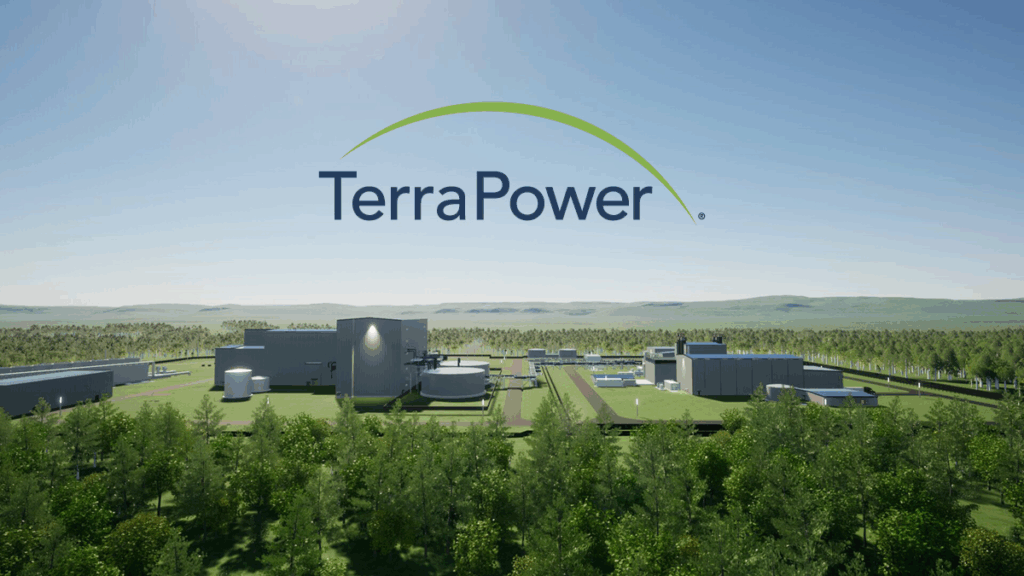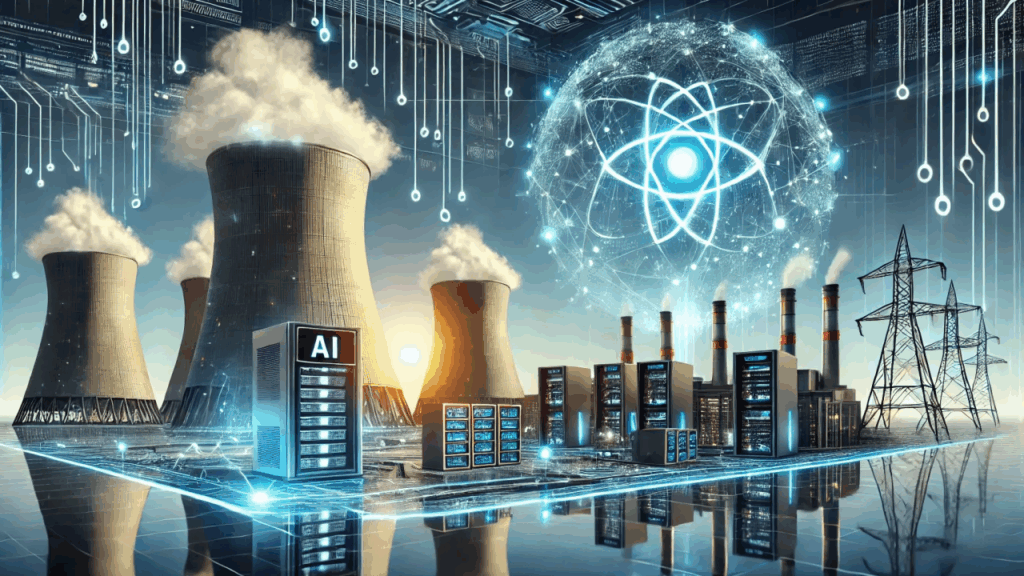Short Presentation to share
The race to power the next generation of artificial intelligence is leading tech behemoths beyond traditional renewable sources and deep into the realm of nuclear energy. In a significant move, Nvidia, through its venture capital arm NVentures, has joined Bill Gates and HD Hyundai in a substantial $650 million funding round for TerraPower, Gates’ nuclear power startup. This investment underscores a growing consensus among tech industry leaders: the immense power requirements of AI data centers necessitate a reliable, carbon-free, and scalable energy solution, and small modular reactors (SMRs) are emerging as a leading contender.
TerraPower, founded in 2006, is at the forefront of SMR technology, aiming to revolutionize nuclear power through standardization, miniaturization, and scalability. Their flagship project, the 345-megawatt Natrium plant in Wyoming, utilizes liquid sodium for cooling and molten salt for storing excess heat, capable of delivering up to one gigawatt of power. This project is part of the U.S. Department of Energy’s Advanced Reactor Demonstration Program, signaling a federal push for next-generation clean energy. While non-nuclear construction for the Natrium plant is underway, regulatory approval for power-producing components is not expected until 2026, with power generation slated to begin by 2030.
Nvidia’s investment is not an isolated incident. The tech industry has been quietly, yet increasingly, investing in nuclear solutions to meet their soaring energy demands. Oracle has reportedly secured permits for three SMRs to power its AI data centers, while Microsoft is involved in plans to restart the Three Mile Island nuclear reactor. Google has partnered with Kairos Power for seven SMRs to support its operations, and Amazon is actively funding three energy companies, two of which specialize in nuclear reactors, to secure its future power needs. Even Meta, initially a latecomer, has recently opened its doors to nuclear solutions, with founder Mark Zuckerberg acknowledging that power availability, not just AI GPUs, is becoming the bottleneck for AI growth.
The urgency stems from the unprecedented energy consumption of AI data centers. As AMD recently highlighted, zettascale supercomputers will require approximately half a gigawatt to operate—an amount equivalent to powering 375,000 homes. This staggering demand far outstrips the current capabilities of national grids, pushing tech giants to secure their own energy futures.

Future Solutions and Alternatives
To meet the colossal energy demands of AI, the tech industry is exploring a wide array of cutting-edge solutions that go beyond traditional power sources.
One of the most promising areas is advanced nuclear technology. While TerraPower and Kairos Power are leading the charge with their molten salt reactor designs, other innovators like Copenhagen Atomics and Moltex Energy are also developing reactors that promise enhanced safety, greater efficiency, and significantly reduced nuclear waste. Meanwhile, microreactors—such as Westinghouse’s eVinci and Ultra Safe Nuclear Corporation’s Micro Modular Reactor—are being designed for remote or modular deployment. These compact units can deliver between 5 and 15 megawatts of power, operate for years without refueling, and require minimal maintenance, making them ideal for powering isolated data centers or supplementing grid capacity.
But nuclear isn’t the only path forward. AI itself is being harnessed to optimize how energy is used across global networks. Through smart load balancing, workloads can be shifted in real time to data centers where energy is cleaner or more abundant, helping reduce peak demand and carbon emissions. In parallel, virtual power plants (VPPs) are emerging as a way to aggregate distributed energy resources—like rooftop solar, batteries, and EVs—into a coordinated system that can support the grid and reduce reliance on centralized power stations.
Renewables are also evolving. Long-duration energy storage technologies, such as iron-air batteries from Form Energy, gravity-based systems from Energy Vault, and thermal storage from Antora Energy, are being developed to store excess solar and wind power for hours or even days. Some companies are even exploring hybrid energy hubs that combine SMRs with solar farms and battery storage, creating resilient, around-the-clock clean energy ecosystems tailored for data center operations.
Looking further ahead, hydrogen and fusion are gaining traction. Green hydrogen, produced using renewable or nuclear-powered electrolyzers, could serve as a clean backup fuel for data centers. And while still experimental, fusion energy is inching closer to reality. Companies like Helion Energy and Commonwealth Fusion Systems are aiming to bring commercial fusion online within the next decade—an achievement that could redefine the global energy landscape.
Finally, none of this progress will be possible without policy and infrastructure innovation. Governments are beginning to streamline nuclear licensing processes, including pre-approving reactor designs and supporting modular construction. At the same time, tech companies are exploring the development of private microgrids and regional energy hubs to ensure they have direct control over their power supply, bypassing the limitations of aging public grids.

The Road Ahead
The collective investments in SMRs and advanced nuclear technologies reflect a strategic pivot by the tech sector. These companies are not only seeking to meet their immediate and future energy demands but also to achieve ambitious carbon-neutral commitments. With nuclear power offering consistent, carbon-free baseload energy, it presents a compelling solution for the always-on nature of AI workloads and data center operations, complementing intermittent renewable sources like solar and wind.
However, the success of this nuclear renaissance hinges on public trust, regulatory agility, and continued innovation. As the world watches the rollout of the first commercial SMRs, the tech industry’s bold energy bets may well define the infrastructure of the AI age.
Related Videos
Related Content
- NVIDIA CEO Drops the Blueprint for Europe’s AI Boom | NVIDIA Blog
- Can nuclear power really fuel the rise of AI? | MIT Technology Review
- Nvidia Goes Nuclear, Investing in Bill Gates’ Start-Up – Barron’s
- Nvidia bets on Gates-backed TerraPower micronuclear provider • The Register
- Big Data Demystified: Turning Complex Data into Clear Insights for Strategic Growth
- Advanced Data Visualization Techniques for Business Intelligence
- Google and Elementl Power Forge Partnership for 1.8 GW of Advanced Nuclear Energy — A Bold Step Toward a Carbon-Free Future
- AI, Cybersecurity, and Sustainability
- A Week in Tech: AI, Cybersecurity, and Sustainability
- Harnessing the Power of IT: The Double-Edged Sword in the Fight Against Climate Change
